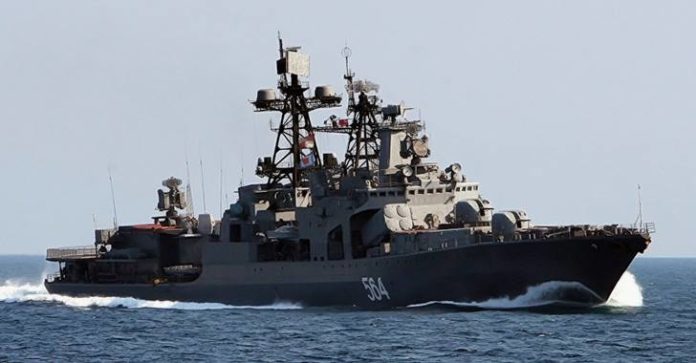
By Darius Shahtahmasebi at theantimedia.org
Notable American foreign policy critic and linguist, Professor Noam Chomsky, has stated numerous times that the United States’ power has steadily been declining since the end of World War II. As Chomsky notes, in 1945, the United States had “literally half the world’s wealth, incredible security, controlled the entire Western Hemisphere, both oceans, [and[ the opposite sides of both oceans.”
In that context – and in the context of the United States waging war in multiple countries across the globe with the most advanced military technology in the world – it is hard to understand how this has happened. But Chomsky is not wrong.
Beginning with what was referred to as the “loss of China” in the 1940s, the United States slowly began to lose areas of Southeast Asia, which led America to brutally launch the Indochina wars. As Chomsky notes, by destroying South Vietnam in the heavily criticized Vietnam War — a move designed to prevent Vietnam from achieving independence and perhaps becoming a Communist state — the U.S. sent a message to the rest of Indochina that if a nation attempted to break free of U.S-European control, it would likely be bombed into oblivion. The strategy worked at the time; as Chomsky notes, by 1965, every country in the region had dictatorships that were prepared to rule in a way suitable to America’s foreign policy interests. As recent developments in the Asian region have shown, however, the success of this bully-style strategy has been short-lived indeed.
Regardless, the United States has also lost South America. According to Chomsky, the “loss” of South America is easily observable:
“One sign is that the United States has been driven out of every single military base in South America. We’re trying to restore a few, but right now there are none.”
Over the course of the last few decades, the United States has begun to lose the Middle East, as well. In Iraq, the United States helped support Saddam Hussein’s rise to power and went so far to support his war of aggression against neighboring Iran. Then, the U.S. turned its back on Hussein, attacking Iraq in 1991 under the presidency of George H.W. Bush. As a result, the U.S. learned at least one valuable lesson from bombing Iraq in the early nineties: that Russia was not going to intervene in America’s ambitions in the Middle East.
The Middle East was, therefore, ripe for the taking, and this continued to be the case up until the Syrian war. What people fail to understand, however, is that the United States is not bombing the Middle East into submission because of its immense power, but because it is losing its power, influence, and control throughout the region.
As should be quite clear to anyone following the conflict, Russia has replaced the United States as judge, jury, and executioner (and supposed peace broker) in the five-year Syrian war, successfully retaking the major city of Aleppo from NATO-backed rebel groups.
Russia’s advances in the Middle East have spilled over to the rest of the world. In October of last year, the U.S. officially “lost” its stranglehold over the Philippines. Though it was previously seen as an integral ally U.S. ally vital to countering China’s influence in the Asia-Pacific region, the Philippines openly and proudly boasted about their new ties with Russia and China.
As it transpires, the Philippines has put its money where its mouth is. Russian warships arrived in Filipino territory this Tuesday. According to the Philippines’ Navy, the visit is merely a “goodwill visit,” but the future of joint exercises is to be discussed. A report from Russia’s state-run Sputnik News seemed to contradict this, stating the ships were there specifically to conduct joint exercises with Philippine forces for the purposes of fighting maritime piracy and terrorism.
“You can choose to cooperate with United States of America or to cooperate with Russia,” Russian Rear Admiral Eduard Mikhailov said, speaking at the Manila Harbor.“But from our side we can help you in every way that you need. We are sure that in the future we’ll have exercises with you. Maybe just maneuvering or maybe use of combat systems and so on.”
Mikhailov also seemed to indicate that other players in the region, such as China and Malaysia, would coordinate with the potential training exercises within the next few years. Russia has also offered the Philippines sophisticated weaponry, including aircraft and submarines.
The United States has only one move left: surround Russia’s borders with NATO troops and missiles, which they are doing quite rapidly. Sooner or later, however, the United States will have to admit its very real decline in world standing and will have no choice but to learn to coordinate global affairs with the likes of Russia and China.
Let’s face it — what is the alternative?
This article (End of the US Empire: Russian Warships Just Arrived in the Philippines) is free and open source. You have permission to republish this article under a Creative Commons license with attribution to Darius Shahtahmasebi and theAntiMedia.org.




